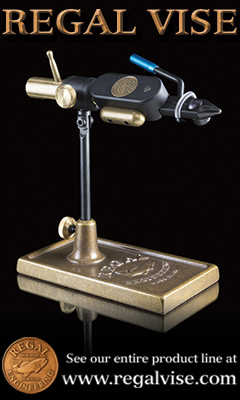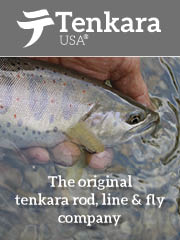12 hours ago
Friday, October 26, 2012
Wednesday, October 24, 2012
Musconetcong River Gorge
 |
| Musconetcong River Gorge |
But this is not the gorge or the river I am writing about today. The Musconetcong River also has a gorge section and this area is even more spectacular than the Ken Lockwood area, with two to three times the flows of the South Branch of the Raritan. This area was part of a private holding for decades. Today part of the area is still owned by a private cooperation and some of it is owned by the state.
 |
| Warren Glen Dam |
Talks have been underway for some time to remove this dam and restore the area to its natural state. Removing the dam which has thirty feet of sediment behind will be a major undertaking but the potential is there restore the rest of the gorge to its original state. That combined with better access could make this one of the best trout waters in the state! This is a project that is still many years out but it is moving forward, definitely one to watch. Perhaps one day in the not so distant future we will have another classic gorge area to fish in New Jersey.
 |
| Large boulders and woody cover! |
Monday, October 22, 2012
Frustration!
As you all know this blog has recently gone through a long dry spell. So it was particularly frustrating when I hit the river on Thursday hoping to put together a photo intensive post on fall wet fly fishing and this is what I get when I turn the camera on…
Now I know I put the battery in the charger the night before so I was a bit puzzled. The mystery was solved when I arrived home that evening. Battery chargers tend to work best when plugged in. A little tip from the Jersey Angler.
Now I know I put the battery in the charger the night before so I was a bit puzzled. The mystery was solved when I arrived home that evening. Battery chargers tend to work best when plugged in. A little tip from the Jersey Angler.
Thursday, October 18, 2012
Musconetcong River Restoration Work
 |
| Photo by Lou DiGena |
Central Jersey Trout Unlimited, along with several other T.U. Chapters and partners, recently worked on a planting project on the Musconetcong River. The project location was on a state owned Wildlife Management Area just upstream of the Asbury dam. This area is impaired by eroding banks, lack of riparian cover, storm water runoff issues, water quality pollution such as fecal chloroform from sources such as dairy cows in the river or its tributaries as well other problems.
 |
| Photo by Lou DiGena |
About fifty volunteers from several organizations and schools, including some folks as far away as Colorado participated in this event. In record time, holes were dug and 150 containerized plants and trees were planted. After the planting all of the new backside residents were caged or covered with netting to ward off the hungry resident deer and beavers. This work will go a long way to enhance the ripariarn cover on this section of river.
It was also a great way to introduce some children, including my oldest, to some conservation work and some good old back breaking manual labor. They took to it like a duck to water, and thoroughly enjoyed the experience!
 |
| Photo by Lou DiGena |
Many thanks to all the volunteers who gave up part of their weekend to give something back to the river!
 |
| Photo by Lou DiGena |
Tuesday, October 16, 2012
Monday, October 15, 2012
Friday, October 12, 2012
Stink Bugs…Stink
It's that time of year again. The days are getting shorter, the nights are getting cooler and the stinkbugs are getting into everything! This is a relatively new phenomena for us here in New Jersey. Over the last few years these little odorous bastards invade our homes by the score when the weather turns cool. Your home can be sealed tight as a drum and they still find their way in.
Apparently they have few natural predators because of their highly effective self defense system. The exception appears to be my golden retriever, who seems to be fond of them but that dog has never been quite right. Dog breath is bad enough, essense of stink bug on dog breath brings things to a whole new level.
This fellow on the vice has me thinking…I wonder if trout can smell?
Wednesday, October 10, 2012
Orvis, TU begin project to open 1,000 miles of water over next decade
MANCHESTER, Vt.—Orvis and Trout Unlimited this week announced the first two streams that will be improved to allow better passage for wild and native trout as part of the new Orvis / Trout Unlimited “1,000 Miles Campaign.”
Murphy Brook in Vermont and Tabor Brook in New Hampshire—both tributaries of the Connecticut River system—will be the first beneficiaries of funding raised by Orvis and its customers, and TU will oversee construction and reconnection projects on both streams. Migration-halting culverts will be replaced, and dozens of new miles of habitat will be available to brook trout and brown trout that need intact coldwater habitat to spawn and to escape the worst of summer’s heat.
Thanks in part to an Orvis grant and matching funds from the company’s customers, the two entities hope to open up 1,000 miles of new coldwater habitat to trout and salmon all over America. Many streams with spawning and rearing potential—and fishing potential—are now blocked by faulty culverts and other man-made barriers. The campaign’s goals include not only increasing overall trout habitat from coast to coast, but improving fishing opportunity resulting from stream improvements.
“Opening up 1,000 miles of new habitat for trout and salmon over the next 10 years is an ambitious goal, but we think we can do it,” said Elizabeth Maclin, TU’s vice president for eastern conservation. “We’re lucky to have dedicated partners like the people at Orvis—they’ve always been very supportive of the work we do, and their commitment to this project means the world to us.”
By opening up habitat in Murphy Brook and Tabor Brook to migrating fish, anglers will likely see improved fish numbers in downstream stretches of water, and enjoy more fishable water in the coming years. Two culverts will be replaced on Tabor Brook this fall, and work to remove a culvert that blocks upstream migration on Murphy Brook will begin later in the year.
The 1,000 Miles Campaign will help fund culvert removal projects on several other trout streams located all over America. These streams are:
- Kinne Brook, a tributary to the Westfield River in Massachusetts
- Coyner Springs, a tributary to the South River near Waynesboro, Va.
- Crazy Creek, a tributary to the Crooked River in the Upper Deschutes River drainage in Oregon
- Aldrich Brook, a tributary to Azizschos Lake and the Magalloway River in Maine
- Yellow Creek, a tributary to the Bear River in southwest Wyoming
- Big Slough Creek, a Driftless Areas stream in Jackson County, Wisc.
- Mabel Creek, a coastal cutthroat trout stream in Oregon.
“Culverts are significant impediments to fish passage and survival – just as significant as a major dam – but the solution is dramatically simpler, costs less, and the overall benefits to many watersheds is profound,” said Dave Perkins, Vice Chairman of Orvis. “By removing these impediments, we not only add vital habitat for fish, but we also open many miles of fishable waters for anglers. We’re proud to partner with TU in this effort to engage the fly-fishing community in support of this often overlooked opportunity to dramatically improve fish habitat across the country.”
Friday, October 5, 2012
Catch Magazine

I just finished reading the latest edition of Catch Magazine. Another great issue! Check it out.
Catch Magazine
- Posted using BlogPress from my iPad
Thursday, October 4, 2012
October Caddis
In my neck of the woods the October Caddis is a sporadic hatch at best. Fortunately it is a big bug that gets the attention of trout. It is my understanding that the insect hatches at night or in the early morning, which may be the reason I don't see it often. Once school starts for the kids, I will seldom be able to get on the water before 10:00am on a weekday.
That being said, I do have quite a bit of luck with pupae patterns that represent this insect. The version I have tied here is not an original pattern but a replication of a commercial one I picked up years ago. It worked well then, so I faithfully reproduced it and have been tying it the same way ever since.
As a European nymphing enthusiast I like to fish this fly as an anchor fly. With the low water conditions we find on our rivers in the autumn of most years the tungsten bead is all the weight I need to get the flies in the zone. Since I am using it as an attractor pattern I brighten up the colors a bit, and it works well for me. The naturals are more of a dull orange, tie them that way if you are looking for a more realistic pattern.
It's a good sized fly, I will fish it as large as a size 8 and as small as a size 12. A middle of the road size 10 is my all around favorite.
 Recipe:
Recipe:Hook: Standard nymph or natural bend hook 1x or 2x long
Bead: Black tungsten sized to match the hook
Underbody: Green Mylar or Krystal Flash
Body: Orange ultra chenille tinted with a dark marker
Ribbing: Red wire
Antenna: A light and dark barred feather like Woodduck
Legs: Partridge
Thorax: Black ostrich herl
Its been a while...
After a long siesta things will be ramping back up here. It was a very busy summer but things have slowed down and there is finally some time to actually do some fishing and with that some writing.
Subscribe to:
Posts (Atom)


















